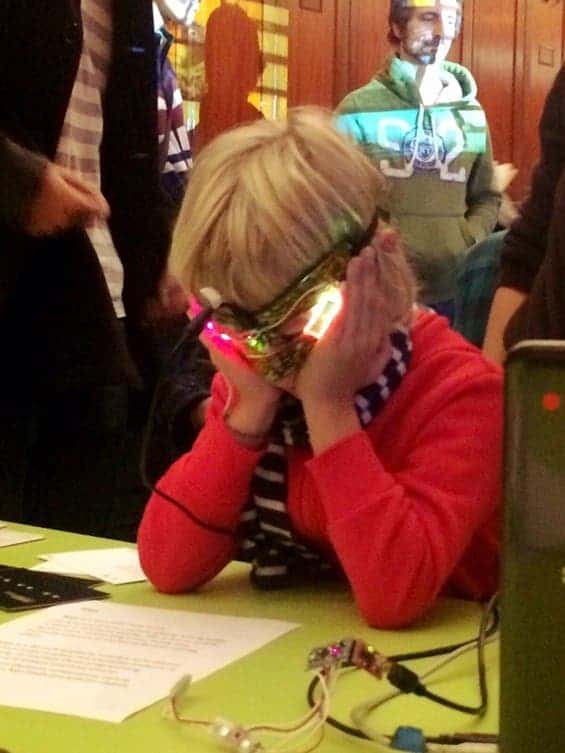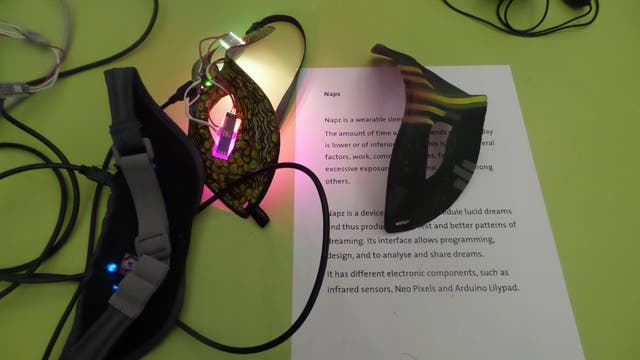The London Design Festival featured many spectacularly designs that really make you feel the future is here; among them, this was Napz – a biohacking device that improves your sleep quality and can even simulate lucid dreams.
Octavio A. Martinez Garcia, a Mexican robotic engineer who works for COCOLAB presented the project, which uses infrared sensors:
“The prototype is an eye mask designed to measure REM, using LED lights to gently stimulate you and bring you to the border of consciousness and unconsciousness so you can begin to play with your dreams,” explains García. “Today people get a lot less sleep, and of a much worse quality. Napz is a wearable device intended to schedule lucid dreams and thus produce actual rest and better patterns of REM sleep. Its interface allows the programming, design, and analysis of dreams. As everybody is different the device needs to be calibrated to each individual. The inspiration came from my own experience of lucid dreaming.”
Influencing dreams can help people suffering from insomnia, severe nightmares, PTSD and similar sleep disorders. The not-so-well-understood technique of lucid dreaming has often been proposed as a remediation tool, but it requires a lot of training in order to work properly – and doesn’t always do so. Napz could allow patients to access lucid dreaming more quickly, while also provide recreational opportunities. However, I haven’t been able to find a peer reviewed study that reviewed the results, nor a report detailing its effects.
Images via The Creators Project











